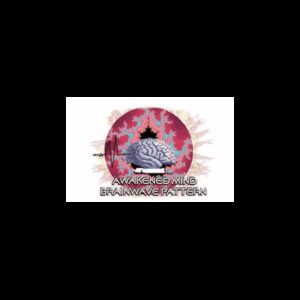Reviewed by Dr.Vijaykumar Kamat & written by
Dr.Gauri Mane.
Big Toe Arthritis: Comprehending and Handling Hallux Rigidus
Hallux Rigidus, or big toe arthritis, is a common ailment that can cause severe pain and limited mobility. This type of arthritis causes stiffness and soreness in the joint at the base of the big toe. To manage your big toe joint pain and find relief from arthritic pain, it’s important to know the causes, symptoms, and available treatments. The most prevalent type of arthritis affecting the foot, Hallux Rigidus, or arthritis in the big toe, is more than just a bother; it can significantly limit your daily activities.
This illness, which is characterized by big toe joint stiffness, swelling, and pain, can make it difficult to walk, stand, or even put on shoes. Understanding and treating this problem early on can result in more effective management and treatment for arthritic big toe, regardless of the cause of the symptoms—osteoarthritis toe, gout in the big toe, or another type of toe arthritis. The purpose of this article is to explore the causes, symptoms, and possible treatments for this debilitating ailment in order to help individuals who are suffering from it and to enhance their quality of life.
What is Hallux Rigidus?
The degenerative disorder known as hallux rigidus, or arthritis in the big toe, affects the metatarsophalangeal (MTP) joint. Stiffness in this joint, which joins the first big toe bone to the foot, can make it exceedingly difficult to carry out daily activities. In contrast to other forms of arthritis that may impact many joints at the same time, Hallux Rigidus only affects the big toe, resulting in discomfort and limited range of motion.
Causes of Arthritis in the Big Toe
Hallux Rigidus, or big toe arthritis, is a common ailment that can have a major effect on a person’s mobility and quality of life. This illness has a variety of underlying causes, including biomechanical, genetic, and environmental variables. It is essential to comprehend these factors in order to manage and treat patients effectively. The following are the main reasons why big toe arthritis occurs:
- Wear and Tear: The wear and tear of the cartilage inside the metatarsophalangeal (MTP) joint is the most common cause of Hallux Rigidus. Arthritis develops when the cartilage, which acts as a cushion between the bones, deteriorates over time as a result of regular stress and strain.
- Injury: Big toe fractures, dislocations, or severe sprains can harm the joint’s cartilage or cause severe sprains, which can hasten the onset of arthritis. Long-term joint problems may result from damaged cartilage, even after the injury has healed.
- Genetic Factors: The development of Hallux Rigidus is influenced by genetics. A genetic predisposition to big toe arthritis may exist in some people, suggesting that genetic factors can affect the structure and function of the joint, increasing its vulnerability to arthritis.
- Improper Foot Alignment: The MTP joint may be subjected to extra strain as a result of abnormal foot mechanics and alignment, such as overpronation or flat feet. The cartilage in the joint may prematurely wear out as a result of this increased pressure. Similar to how bunions (hallux valgus) can affect a joint’s natural alignment and function, they can also play a role in the development of big toe arthritis.
- Irritable Bowel Conditions: A number of inflammatory diseases, including gout, psoriatic arthritis, and rheumatoid arthritis, can have a direct impact on the health of the foot’s joints, particularly the big toe. These illnesses result in inflammation inside the joint, which can hasten the deterioration of cartilage and cause arthritis.
- Overuse: People who work in jobs that require repetitive motions or a lot of stress on the foot, such as athletes, may be more susceptible to developing Hallux Rigidus. Chronic usage can accelerate the deterioration process and cause big toe arthritis to develop earlier than expected.
- Age: For many kinds of arthritis, including Hallux Rigidus, age is a significant risk factor. The aging process raises the chance of getting arthritis in the big toe due to the cartilage of the joint being weakened by wear and tear, past injuries, and other medical disorders.
Symptoms of Big Toe Arthritis
Many symptoms can be experienced by someone with Hallux Rigidus arthritis, which affects the big toe and can impair movement, comfort, and day-to-day activities. Early detection of these symptoms is essential for efficient management of the illness and the prevention of additional joint damage. The following are the main signs and symptoms of big toe arthritis:
Pain and Discomfort: The most frequent and obvious symptom is discomfort in the big toe, which is particularly visible when one is walking, running, or even just standing. In more severe situations, the discomfort may also be felt when at rest.
Stiffness: One of the main symptoms of Hallux Rigidus is stiffness in the big toe joint. The range of motion of the toe may be restricted by this rigidity, making it challenging to execute actions like crouching or climbing stairs that call for bending the toe.
Swelling and Inflammation: It is typical for there to be swelling surrounding the joint, which may be accompanied by inflammation, giving the toe a red appearance and a warm feeling when touched. The soreness and pain felt may be exacerbated by this swelling.
Difficulty Wearing Shoes: It can be difficult to find comfortable shoes because of the swelling and the formation of bone spurs (described below). Shoes that compress the big toe, like high heels or tight shoes, might make the pain and suffering worse.
Osteophytes, or bone spurs, may form around the afflicted joint over time. These are bony outgrowths that develop as the body attempts to mend the injured joint surface. Although bone spurs are a normal reaction to injuries to the joint, they can further restrict range of motion and provide pain when they rub against other toes or shoes.
Reduced Range of Motion: As arthritis worsens, there is less range of motion in the big toe. In more severe situations, the toe may stiffen up and develop a “frozen joint,” in which the toe’s mobility is either completely missing or very restricted.
Crepitus: When moving their big toe joint, some people may feel or hear a grinding noise. The condition known as crepitus is brought on by the rough surfaces of the bones rubbing against one another as a result of the cartilage deterioration.
Deviations from Normal Walking Pattern: People with Hallux Rigidus may adjust their gait to prevent pain when walking. Over time, this adjustment may cause strain on other foot components as well as the knees, hips, and back.
Limping: In extreme situations, the stiffness and soreness may cause limping, particularly following periods of rest or upon taking one’s first steps in the morning.
Diagnosing Arthritis in the Big Toe
A physical examination is usually required for the diagnosis, during which the physician evaluates the patient’s range of motion and looks for any indications of edema or bone spurs. Imaging studies, such as X-rays, can verify the diagnosis by displaying the degree of joint injury and any bone spur formation.
Options for Treating Hallux Rigidus
A variety of techniques are used to treat Hallux Rigidus, or arthritis in the big toe, with the goals of reducing discomfort, enhancing joint function, and delaying the illness’s course. For more severe situations, there are surgical procedures in addition to conservative, non-surgical methods. An outline of the Hallux Rigidus therapy options is provided below:
Non-surgical Treatments
Drugs
Nonsteroidal anti-inflammatory drugs (NSAIDs): NSAIDs, which can be obtained over-the-counter or with a prescription, can help relieve pain and reduce inflammation.
Pain Relievers: Without its anti-inflammatory properties, acetaminophen (Tylenol) may be prescribed for pain relief.
Ice Therapy: After a longer exercise, applying ice packs to the affected area can help reduce swelling and ease pain.
Modifications to Footwear
Shoes with low heels and a wide toe box help ease the strain on the big toe.
Stiff-soled shoes, such as orthopedic ones, can assist restrict big toe movement, thereby minimizing walking-related pain.
Orthotic Devices: Tailored orthotic inserts that alleviate pressure on the big toe and support the arch can be useful in treating symptoms.
Physical Medicine
Exercises aimed at enhancing the toe and foot’s strength and flexibility can help preserve joint function and lessen pain. Manual therapy methods can also be helpful in extending the joint’s range of motion.
Substances Injected
Corticosteroid Injections: These can offer momentary relief from joint discomfort and inflammation.
Platelet-rich plasma (PRP) Injections: By encouraging healing, PRP injections may help manage pain and inflammation, though further research is required.
Surgical Treatments
When non-surgical treatments are insufficient to relieve the problem or when the patient’s quality of life is greatly affected, surgical options are taken into consideration.
The cheilectomy
In order to give the toe greater space to move, this treatment entails removing bone spurs and a part of the foot bone. When used for mild to moderate cases of Hallux Rigidus, it works well.
Fusion of the Arthrodesis Joint
In extreme circumstances, permanent joint fusion might reduce discomfort by preventing joint motion. Although this surgery works well to relieve discomfort, it reduces the toe’s flexibility, which affects certain activities.
A joint replacement, or arthroplasty
This entails using artificial parts to replace the damaged joint surfaces. While joint replacement may not be the best option for every patient, it can preserve greater toe movement than fusion especially those with high activity levels.
Osteotomy With this surgery, the big toe’s bones are realigned to improve function and lessen pain. In general, younger patients with less severe arthritis are given consideration.
Selecting the Appropriate Course of Action
The severity of the ailment, the patient’s degree of activity, age, and general health all play a role in the therapy decision. Initially, a cautious approach is typically advised, with surgery being considered as a last option after all other treatments have been exhausted.
Patients with Hallux Rigidus must collaborate closely with their physician to create a personalized treatment plan that addresses their unique requirements and objectives. Early intervention can support the maintenance of foot health and mobility as well as successful symptom management.
Biogetica therapies for Big Toe Arthritis
Biogetica provides a number of complementary and alternative therapies for a variety of illnesses, including arthritis. It’s crucial to remember that each person may respond differently to various therapies, and that you should always speak with a healthcare provider before beginning a new treatment plan. Visit www.biogetica.com to consult with a doctor for free.
Biogetica may provide therapies for big toe arthritis, sometimes referred to as hallux rigidus, which target the underlying causes of the illness, including inflammation, discomfort, and stiffness in the joints. These therapies could consist of:
Herbal supplements: Biogetica may provide herbal supplements with substances including devil’s claw, ginger, turmeric, and Boswellia serrata, which are thought to have anti-inflammatory qualities and may help lessen arthritis-related pain and inflammation.
Homeopathic remedies: Homeopathy is a medical method founded on the idea that “like cures like,” in which highly diluted medicines are used to encourage the body’s inherent healing ability. Biogetica provide homeopathic products designed to support healthy joints.
Nutritional supplements: Vitamins, minerals, and other nutrients that support joint health and may help lessen arthritis-related inflammation and discomfort may be found in nutritional supplements offered by Biogetica.
Herbs used in Ayurveda: Ayurveda is an age-old Indian medical system that promotes health and well-being via diet, lifestyle changes, and herbs. Ayurvedic herbs including ashwagandha, guggul, and shallaki, which are thought to have anti-inflammatory and analgesic qualities and may help relieve arthritic symptoms, are also offered from Biogetica.
Managing Pain and Symptoms
Managing everyday activities to prevent exacerbating the disease is essential, in addition to the previously listed treatments. This could entail staying away from activities that strain the big toe excessively, utilizing walking aids to relieve foot stress during flare-ups, and keeping a healthy weight to lessen overall pressure on the feet.
Prevention and Modifications to Lifestyle
While preventing Hallux Rigidus isn’t always possible, there are lifestyle modifications that can help reduce its progression and symptoms:
• Regular Exercise: Maintaining the flexibility of the toe joint and the strength of the surrounding muscles.
• Wear the Right Shoes: Steer clear of shoes with tiny toe boxes and high heels.
• Manage Underlying Conditions: You can avoid exacerbations of gout and related conditions by managing them.
Conclusion
Big toe arthritis can be difficult to treat, but it is controllable with the correct care. An active lifestyle and relief from symptoms can be attained by investigating non-surgical and surgical treatment options, as well as by understanding the underlying reasons and identifying them early. If you think you may have Hallux Rigidus, see a doctor to find out the best course of action for your unique situation.
Q1. What is the cause of Hallux Rigidus?
Arthritis results from wear and tear on the joint at the base of the big toe, which is the main cause of hallux rigidus. Injuries to the foot, hereditary susceptibility, abnormal foot mechanics (such as flat feet or overpronation), and inflammatory conditions like rheumatoid arthritis or gout are further contributing causes.
Q2. Is there a cure for Hallux Rigidus?
Hallux Rigidus cannot be cured, however it can be adequately controlled with a mix of therapy. Symptom relief is possible with non-surgical methods such as medicine, physical therapy, and orthotic devices. Surgical procedures may offer long-term comfort and improved joint function in more severe situations.
Q3. Is it beneficial for Hallux Rigidus to walk?
For the preservation of foot health and mobility, walking can be helpful. Wearing suitable footwear that minimizes pain and supports the foot is crucial. Walking can be more comfortable with the use of wide-toe box shoes or stiff-soled custom orthotics. For a customized treatment plan, speak with a healthcare professional if walking causes you a lot of pain.
Q4. How fast does Hallux Rigidus advance?
The severity of the ailment at diagnosis, activity levels, and the efficacy of the selected treatment plan are some of the variables that affect how Hallux Rigidus progresses from person to person. The symptoms can be reduced and the progression slowed down with early intervention and appropriate care.









 100% Money Back Guarantee
100% Money Back Guarantee












































istanbul atasehir bolgesi basta olmak uzere Türkiye’nin her bolgesinden vozol siparisi verebilirsiniz.
istanbul ataşehir vozol satış noktası, Ataşehir Vozol hemen sipariş ver
Türkiye’nin en güvenilir, petshop markası. Petshopa.com ile güvenli alışverişin keyfini çıkarın.
Having read this I thought it was very informative. I appreciate you taking the time and effort to put this article together. I once again find myself spending way to much time both reading and commenting. But so what, it was still worth it!
Usually I do not read article on blogs, however I would like to say that this write-up very compelled me to take a look at and do it! Your writing style has been amazed me. Thank you, very nice article.
Nice Article
Hello my loved one! I want to say that this post is amazing, great written and include almost all significant infos. I would like to look extra posts like this.
Hey there, You have done a fantastic job. I will certainly digg it and personally recommend to my friends. I’m confident they’ll be benefited from this site.
2J6ZhYaVCii
KqbPYJGJLwX
kEoX0PDtwNn
lCaZO6jKasp
x4WZ1oSOQ4z
FfpoTBaHoyS
5qvUxhkgy4I
cgJwEtOcd99
xhDEn8TIeXC
p68Z9Lc9bTB
m14yfK9VEDn
wofFGlmdzmZ
3yrn65sKvtg
zOOalzSDmG4
4QMbywblgBR
K6TSnGDjJzK
lWM3aKxdkvX
avKavubQBuY
ZejDls2B34Y
hf8CzPIFzWa
b9fCLZ5vOTI
dkUJ1S3o0S5
oHoJCMpq4Df
g8EpviRqoVd
qUIOI32JJS2
6gf83BZxDQM
dTCqqv6pZdP
BFqabd1WbJb
XaaUZkoPptc
MohvUPyISCH
G5LHZRj2SZG
mo4eSEvVwZ9
0LpQT4hZhbx
JrnMLWktxmZ
o6RrIAdAG5M
KR4crYjz0GQ
Spor Habeleri,Güncel Haberler, Sondakika Haberleri